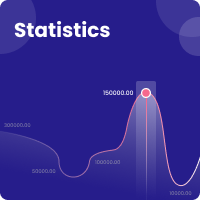The message of data and its conception as an executive title in Colombia
DOI:
https://doi.org/10.21615/cesder.8.1.3Abstract
The new technologies bring with it a significant change in relation to the historic negotiating dynamics of humanity, as the channels of communication between people are broadened, as well as ways of exchanging goods and services between them.
Closely related to the above, the electronic document is highly relevant, as this is the ideal medium to translate these wills of exchange of goods and services in accordance with the non-physical presence of the negotiating parties, thus constituting a guarantee for the parties in relation With the obligations and rights acquired in one or another commercial movement.
Now, the executive title and the executive process come into context, developing the first executive title concept, with all its characteristics and requirements, and then proceed to deepen the second concept, the executive process as a judicial means to enforce rights or credits in The executive title incorporated.
Finally, a thorough analysis is made of the notion of the data message as an executive title, observing the structural aspects of the title and the executive process in relation to the data message.
Downloads
References
Engel J Jr. Epilepsy; Overview. 2º ed. Oxford: Academic Press; 2014.
Fisher RS, Acevedo C, Arzimanoglou A, Bogacz A, Cross JH, Elger CE, et al.. ILAE official report: a practical clinical definition of epilepsy. Epilepsia 2014; 55(4):475-82. https://www.ncbi.nlm.nih.gov/pubmed/24730690
Fisher RS, Acevedo C, Arzimanoglou A, Bogacz A, Cross JH, Elger C, et al. An operational clinical definition of epilepsy. Palo Alto: International League Against Epilepsy; 2013. http://www.ilae.org/visitors/centre/documents/DefinitionComments-HBester.pdf
Martínez M, Masakazu S, Munari C, Porter R, Roger J, Wolf P, et al. Commission on classification and terminology of the International League Against Epilepsy. proposal for revised classification of epilepsies and epileptic syndromes. Epilepsia 1989; 30(4):389-99. https://www.ncbi.nlm.nih.gov/pubmed/2502382
Acevedo C, Miranda C, Campos M, Caraballo R, Carpio A, Cuadra L, et al. Informe sobre la epilepsia en Latinoamérica OPS/OMS. Ciudad de Panamá: AG Publicidad; 2008. http://www.ilae.org/visitors/policy/documents/PAHO-report2013-Spanish.pdf
Sander JW. Epilepsy; Epidemiology. 2º ed. Oxford: Academic Press; 2014.
Cansu A, Serdaroğlu, A, Yüksel D. Prevalence of some risk factors in children with epilepsy compared to their controls. Seizure 2007; 16(4):338-44. https://www.ncbi.nlm.nih.gov/pubmed/17391991
Carrizosa J. Prevalencia, incidencia y brecha terapéutica en la epilepsia. Iatreia 2007; 20(3): 282-296. http://www.redalyc.org/pdf/1805/180513858006.pdf
Díaz R, Ruano M, Chacón J, Vera A. Perfil Neuroepidemiológico en la zona centro del Departamento de Caldas (Colombia), años 2004-2005. Rev Neurol 2006; 43 (11): 6-46. http://www.scielo.org.co/scielo.php?script=sci_arttext&pid=S0120-24482009000200003
Alcázar J, Castaño J, Fragoso L, García S, Giraldo S, Jiménez S, et al. Factores de riesgo presente en una muestra de población epiléptica de manizales, Caldas, Colombia. Arch Med (Manizales) 2008; 8(1):32-39. http://revistasum.umanizales.edu.co/ojs/index.php/archivosmedicina/article/download/1322/1427
Ríos B, Rey L, Ibarra J, Olivas E. Prevalencia de crisis convulsivas neonatales en el Instituto Nacional de Perinatología. Rev Mex Neuroci 2007; 8(4):360-366. http://revmexneuroci.com/wp-content/uploads/2014/06/Nm074-05.pdf
Glass H, Hong K, Rogers E, Jeremy R, Bonifacio S, Sullivan J, et al. Risk factors for epilepsy in children with neonatal encephalopathy. Pediatr Res 2011; 70: 535-540. https://www.ncbi.nlm.nih.gov/pmc/articles/PMC3189270/
Whitehead E, Dodds L, Joseph K, Gordon K, Wood E, Allen A, et al.. Relation of pregnancy and neonatal factors to subsequent development of childhood epilepsy: a populationbased cohort study. Pediatrics 2006; 117: 1297-1307.
Sen C, Sun Y, Vestergaard M, Christense J, Ness R, Haggerty C, et al. Preeclampsia and risk for epilepsy in offspring. Pediatrics 2008; 122: 1072-1078. http://pediatrics.aappublications.org/content/122/5/1072?download=true
García A, Pérez A. Estado fetal no tranquilizador, asfixia perinatal y encefalopatía neonatal. Ann Pediatr 2005; 63:1-4. http://www.analesdepediatria.org/es/estado-fetal-no-tranquilizador-asfixia/articulo/13076760/
Knupp K, Koh S, Park K. Pediatric epilepsy: five new things. Neurol Clin Pract 2011; 76(2):s20-s25. http://www.neurology.org/content/76/7_Supplement_2/S20.short
Ortiz M. La epilepsia en pediatría, primera de dos partes. Rev Mex Puer Pediatr 2003; 11(61):23-29.
Chentouf A, Talhi R, Dahdouh A, Benbihi L, Benilha S, Oubaiche M, et al. Consanguinity and epilepsy in Oran, Algeria: A case–control study. Epilepsy Res 2015, 111:10-7. https://www.ncbi.nlm.nih.gov/pubmed/25769368
Rodríguez L, Quispe Y, Sifuentes J. Factores de riesgo de la epilepsia secundaria en niños. Rev Neuro Psiquiatr 2002; 65:136-141. http://www.upch.edu.pe/vrinve/dugic/revistas/index.php/RNP/article/view/1516
Hesdorffer DC, Hauser WA. Epilepsy; risk factors. 2º ed. Oxford: Academic Press; 2014.
Jeldres E, Devilat M, Peralta S, Gómez V. Comorbilidad en niños con epilepsia. Rev Chil Epilepsia 2010; 2:19-28. http://www.revistachilenadeepilepsia.cl/wp-content/uploads/2014/08/201401_completa.pdf
Velásquez OJ. Pediadatos tablas, fórmulas y valores normales en pediatría. 3ª ed. Bogotá DC: Editorial Hipertexto Ltda; 2011. http://www.libreriadelau.com/pediadatos-tablas-44-formulas-y-valores-normales-en-pediatria-medicina.html
Dura T, Petri M, Gallinas F. Estudio descriptivo de la epilepsia infantil. Rev Neurol 2007; 44: 720-724. http://www.neurologia.com/pdf/web/4412/x120720.pdf
Wagner RG, Ngugi AK, Twine R, Bottomley C, Kamuyu G, Gómez-Olivé FX. Prevalence and risk factors for active convulsive epilepsy in rural northeast South Africa. Epilepsy Res 2014; 108(4):782—91. https://www.ncbi.nlm.nih.gov/pubmed/24582322
Sun Y. Vestergaard M, Bocker C, Christensen J, Olsen J. Apgar scores and long-term risk of epilepsy. Epidey 2006; 17:296-301. https://www.ncbi.nlm.nih.gov/pubmed/16570027
Hawley SR, Ablah E, Hesdorffer D, Pellock JM, Lindeman DP, Paschal AM, et al. Prevalence of pediatric epilepsy in low-income rural Midwestern counties, Epilepsy Behav 2015; 53:190–6. https://www.ncbi.nlm.nih.gov/pubmed/26588587
Martínez X, Duarte Y, Portales G, Mirabal G. Estudio epidemiológico de la epilepsia infantil en el municipio de Bahía Honda. Rev Ciencias Médicas 2011; 15(1):76-88. http://scielo.sld.cu/scielo.php?script=sci_abstract&pid=S1561-31942011000100007
Castaño JJ, Giraldo JF, Murillo CA, Jordán Y, Orozco JA, Robledo P, et al. Relación entre peso al nacer y variables biológicas y socioeconómicas de la madre en partos atendidos en un primer nivel de complejidad en la ciudad de Manizales, Colombia, 1999 al 2005. Rev Colomb Obstet Ginecol 2008; 59(1):20-25. http://www.scielo.org.co/pdf/rcog/v59n1/v59n1a03.pdf
Carrascosa A, Yeste D, Copil A, Almar J, Salcedo S, Gussinyé M. Patrones antropométricos de los recién nacidos pretérmino y a término (24-42 semanas de edad gestacional) en el Hospital Materno (Barcelona) (1997-2002). An Pediatr (Barc) 2004; 60(5):406-16. http://www.analesdepediatria.org/es/pdf/S1695403304782995/S300/
Downloads
Published
How to Cite
Issue
Section
License
Copyright (c) 2017 CES Derecho

This work is licensed under a Creative Commons Attribution-NonCommercial-ShareAlike 4.0 International License.
| Article metrics | |
|---|---|
| Abstract views | |
| Galley vies | |
| PDF Views | |
| HTML views | |
| Other views | |




